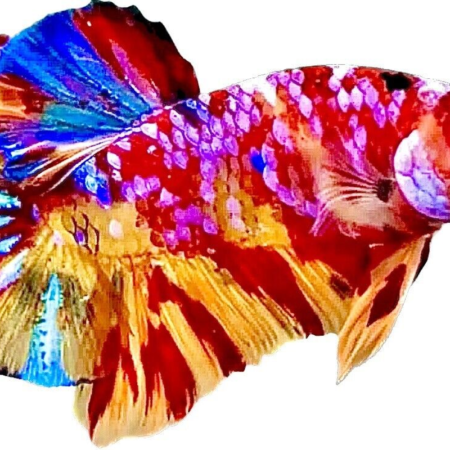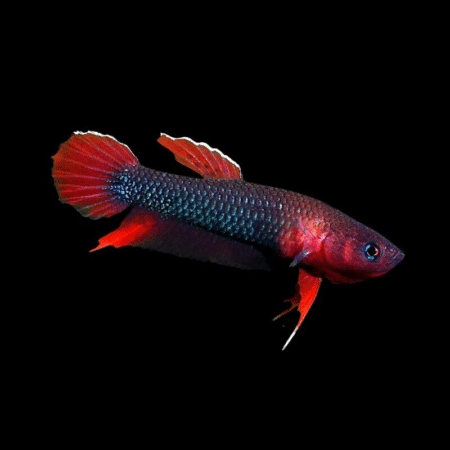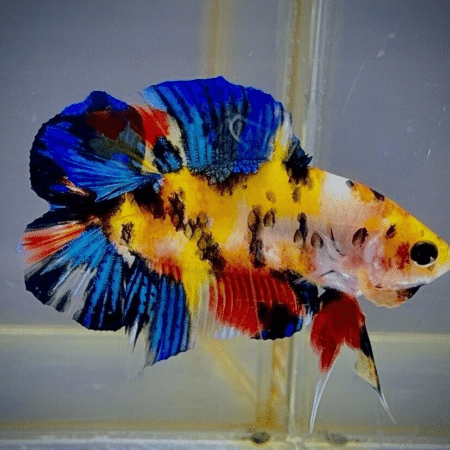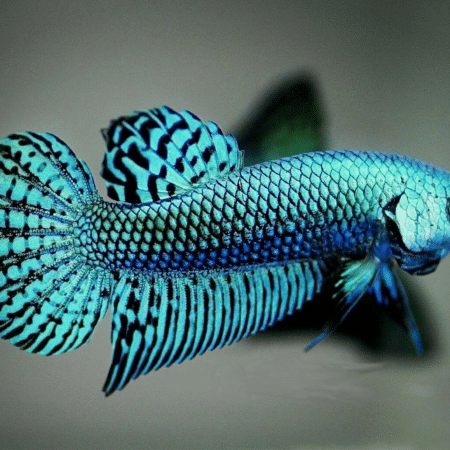live Mosquito Larvae-Jumbo (Bloodworms) PE-bags,90ml-pack.of 25pcs, Ideal Fish Diet Supplement for Betta Fighters, Promote Health and Growth in Peaceful Aquatic Communities, Enrich Your Betta’s Diet with Live Nutrition
£39.99 Original price was: £39.99.£33.87Current price is: £33.87.
Welcome these beautiful creatures into your aquarium with our live Jumbo Bloodworms (90ml, 25pcs). Perfect for Betta fish, these nutritious mosquito larvae enhance vibrant colors and promote healthy growth in peaceful aquatic communities. Ideal for enhancing your fish diet.
994 in stock
Species Introduction
The live Mosquito Larvae-Jumbo, commonly referred to as bloodworms, are a highly nutritious food source for various freshwater fish, particularly Betta splendens. These larvae are harvested from natural habitats, showcasing their vibrant red color, which is indicative of their rich hemoglobin content. Originating from stagnant waters such as ponds and marshes, these larvae thrive in environments rich in organic matter. As a staple in the diets of many aquatic companions, they provide essential nutrients that promote health and growth in fish. The scientific classification places them in the family Osphronemidae, highlighting their connection to other popular aquarium species. In a well-maintained aquarium, these larvae can serve as an excellent dietary supplement, enhancing the overall vitality of your aquatic friends.
Care Requirements Dashboard
| Optimal Living Conditions | |
|---|---|
| Water Temperature | 24-27°C (75-81°F) |
| pH Level | 6.5-7.5 |
| Water Hardness | 4-12 dKH |
| Minimum Tank Size | 80L (20 gal) |
| Salinity | Freshwater |
| Care Level | Beginner Friendly |
Water Quality Parameters
Optimal Range
24-27°C
6.5-7.5
0 ppm
Caution Zone
22-24°C or 27-29°C
6.0-6.5 or 7.5-8.0
0.25-0.5 ppm
Danger Zone
<22°C or >29°C
<6.0 or >8.0
>0.5 ppm
Monitoring Tip: Test water parameters weekly and perform regular water changes to maintain optimal conditions for your aquatic friends!
Natural Behavior & Temperament
The live Mosquito Larvae exhibit a fascinating natural behavior that is crucial for the health and happiness of your Betta fish. These larvae are typically found wriggling in the water, mimicking the movement of natural prey. This lively motion stimulates the predatory instincts of your Betta, encouraging natural hunting behaviors. Bettas are known for their territorial nature and can be quite aggressive; however, when provided with a diet rich in live food such as bloodworms, they exhibit improved health and vitality. The presence of live food in the tank can also reduce stress levels in your fish, as it provides mental stimulation and encourages natural foraging behaviors. Understanding their natural behavior is essential for creating a harmonious aquarium environment where your fish can thrive.
Tank Setup Guide
To create an optimal habitat for your Betta fish and their live food, it is essential to set up the aquarium thoughtfully. Begin with a minimum tank size of 10 gallons to ensure ample swimming space. Incorporate a soft substrate, such as sand or fine gravel, which allows for easy cleaning and mimics their natural environment. Adding live plants not only enhances the aesthetic appeal of the aquarium but also provides hiding spots and reduces stress for your fish. Consider including driftwood or rocks to create territories, as Bettas are territorial creatures. Ensure that the tank is equipped with a gentle filter to maintain water quality without creating strong currents, which can stress your fish. Lastly, use a heater to maintain a consistent water temperature, as fluctuations can adversely affect their health.
Water Quality Management
Maintaining optimal water quality is paramount for the health of both your Betta fish and the live Mosquito Larvae. Regular testing of water parameters is essential to ensure a stable environment. The ideal pH level for Bettas ranges from 6.5 to 7.5, which can be maintained using various water conditioners. Temperature should be kept between 76-82°F (24-28°C) to promote healthy metabolism and activity levels. Water hardness should be maintained between 5-15 dGH, which can be adjusted using specific products designed for aquarium use. Regular water changes, approximately 25% weekly, help to remove toxins and maintain clarity. Additionally, utilizing a high-quality filtration system will aid in keeping the water clean and free from harmful bacteria and parasites, ensuring a safe environment for your aquatic companions.
Feeding & Nutrition
Feeding your Betta fish live Mosquito Larvae is an excellent way to enhance their diet and promote healthy growth. These larvae are packed with protein and essential fatty acids, making them an ideal food source for Bettas, which thrive on high-protein diets. It is recommended to feed your Betta 2-3 times a day, offering only what they can consume in a few minutes to prevent overfeeding and water quality issues. A varied diet that includes live food, high-quality pellets, and occasional freeze-dried options will ensure a balanced nutritional intake. Observing your fish during feeding can provide insights into their health; active feeding behavior is a good indicator of well-being. Additionally, incorporating a feeding schedule can help establish routine and predictability, which can reduce stress in your aquatic friends.
Compatibility Guide
Understanding the compatibility of your Betta fish with other species is crucial for maintaining a peaceful aquarium environment. Bettas are known for their aggressive nature, particularly towards other males and fin-nipping species. Therefore, it is essential to choose tank mates wisely. Ideal companions include peaceful species such as neon tetras, guppies, and Corydoras catfish, which are less likely to provoke aggression. Avoid keeping Bettas with fin-nippers like tiger barbs or other aggressive fish. When introducing new fish, ensure that the tank is adequately sized and that hiding spots are available to reduce stress and territorial disputes. Monitoring interactions during the initial introduction phase is vital to ensure a harmonious community tank.
Tank Mate Compatibility Guide
Great Tank Mates
- Similar sized peaceful fish
- Bottom dwellers
- Robust community fish
Avoid These Tank Mates
- Very small fish
- Long-finned fish
- Aggressive species
Compatibility Note: Always research specific species requirements and observe fish behavior when introducing new tank mates. Individual fish personalities can vary!
Health & Wellness
Maintaining the health and wellness of your Betta fish involves regular observation and proactive care. Common health issues include fin rot, ich, and swim bladder disease, which can arise from poor water quality, stress, or inadequate nutrition. Signs of illness may include lethargy, loss of appetite, or abnormal swimming patterns. To prevent these issues, ensure that water parameters are consistently monitored and maintained. Implementing a varied diet that includes live Mosquito Larvae can significantly enhance your Betta’s immune system and overall vitality. Regular water changes and tank cleanings are crucial to prevent the buildup of harmful bacteria and parasites. If health issues arise, prompt treatment is essential, and consulting with an aquatic veterinarian can provide guidance on appropriate interventions.
Breeding Information
Breeding Betta fish can be a rewarding experience, but it requires careful preparation and understanding of their reproductive behaviors. Bettas are bubble-nesters, meaning the male will create a nest of bubbles at the water’s surface to attract a female. Prior to breeding, it is essential to condition both the male and female with high-quality food, including live Mosquito Larvae, to ensure they are in optimal health. Once the female is introduced, observe their interactions closely; the male will display courtship behaviors, and if she is receptive, spawning will occur. After spawning, the male will care for the eggs and fry, so it is crucial to remove the female to prevent aggression. Fry care involves providing infusoria or finely crushed food until they are large enough to consume larger food items. Monitoring water quality during this period is essential for the successful growth of the fry.
Acclimation Process
When introducing new live Mosquito Larvae to your aquarium, proper acclimation is vital to ensure their survival and health. Begin by floating the sealed bag in the aquarium for about 15-20 minutes to equalize the temperature. After this, gradually mix small amounts of aquarium water into the bag every 5 minutes for about 30 minutes. This process helps the larvae adjust to the new water parameters. Once acclimated, gently release the larvae into the tank, avoiding the introduction of any water from the bag. This method minimizes stress and shock, ensuring that your new aquatic companions thrive in their new environment.
Long-term Care
Long-term care of your Betta fish involves consistent attention to their environment and dietary needs. Bettas can live up to 3-5 years with proper care, so establishing a routine is essential. Regular water changes, monitoring of water parameters, and providing a balanced diet will contribute to their longevity. Incorporating live Mosquito Larvae into their diet not only enhances their nutritional intake but also stimulates natural behaviors. As your Betta ages, it is important to observe any changes in behavior or health, as older fish may require special attention. Maintaining a clean and stable environment, along with regular health checks, will ensure that your Betta remains vibrant and healthy throughout their life.
Natural Habitat Recreation
Recreating the natural habitat of your Betta fish can significantly enhance their well-being and reduce stress. In the wild, Bettas inhabit shallow waters with plenty of vegetation, providing cover and foraging opportunities. To mimic this environment, incorporate live plants such as Java fern or Anubias, which not only provide hiding spots but also contribute to water quality. Adding driftwood and rocks can create territories and enhance the aesthetic appeal of the aquarium. Ensure that the lighting is soft and not too harsh, as Bettas prefer dimly lit environments. By recreating their natural habitat, you can provide a comfortable and stimulating environment for your aquatic companions.
Seasonal Care Adjustments
Seasonal changes can impact the care requirements of your Betta fish and their environment. During warmer months, it is crucial to monitor water temperature closely, as higher temperatures can lead to stress and health issues. Using a reliable aquarium heater can help maintain a stable temperature. In contrast, during colder months, ensure that the tank is adequately heated to prevent temperature fluctuations. Additionally, consider adjusting the lighting duration to mimic natural daylight cycles, which can influence breeding behaviors and overall health. Regular observation during seasonal transitions will help you make necessary adjustments to ensure the continued well-being of your Betta and the live Mosquito Larvae.
Expert Tips
For those looking to provide the best care for their Betta fish and live Mosquito Larvae, consider these expert tips. First, always source your live food from reputable suppliers to ensure quality and safety. Incorporating a variety of food types, including pellets and flakes, alongside live food will promote a balanced diet. Additionally, maintaining a consistent feeding schedule will help establish routine and reduce stress. Utilize a high-quality water conditioner to maintain optimal water parameters, and consider investing in a reliable test kit to monitor water quality regularly. Lastly, take the time to observe your fish daily; understanding their behaviors and preferences will allow you to provide tailored care that enhances their quality of life.
Troubleshooting
In the event of issues arising within your aquarium, having a troubleshooting plan is essential for maintaining the health of your Betta fish and live Mosquito Larvae. If you notice signs of stress or illness in your fish, first assess water quality parameters to identify any potential issues. Common problems include high ammonia levels, which can be remedied through partial water changes and improved filtration. If your Betta is exhibiting aggressive behavior, consider adding more hiding spots or rearranging the tank to reduce territorial disputes. Should you encounter health issues such as fin rot or ich, prompt treatment with appropriate medications is crucial. Consulting with an aquatic veterinarian can provide additional guidance for more complex health concerns.
Scientific Background
The scientific classification of Betta splendens places them within the family Osphronemidae, which encompasses several species known for their vibrant colors and unique behaviors. Research into their natural habitats has revealed their preference for shallow, stagnant waters, where they can find abundant food sources such as mosquito larvae. Understanding their biology and natural behaviors is essential for providing optimal care in captivity. Conservation efforts are also critical, as habitat destruction poses a threat to wild populations. By promoting responsible care and breeding practices, aquarists can contribute to the preservation of this beautiful species.
Advanced Care Techniques
For advanced aquarists looking to enhance their care for Betta fish and live Mosquito Larvae, consider implementing techniques such as creating a biotope aquarium. This involves replicating the natural environment of your Betta, incorporating specific plants, substrates, and decorations that reflect their native habitat. Additionally, experimenting with different feeding methods, such as using feeding rings or target feeding, can stimulate natural hunting behaviors and enhance their diet. Regularly participating in community forums or workshops can also provide valuable insights and tips from experienced aquarists, allowing you to refine your techniques and deepen your understanding of Betta care.
Frequently Asked Questions
Q: What tank size is required for live mosquito larvae?
Live mosquito larvae, or bloodworms, do not require a specific tank size as they are typically used as a supplementary food source rather than a permanent fixture in an aquarium. However, it is essential to ensure that the tank is well-maintained, with clean water and appropriate filtration. If you are culturing them, a small aquarium or container of at least 20 litres can be suitable for breeding purposes. Ensure that the container has a secure lid to prevent them from escaping and a gentle aeration system to keep the water oxygenated and the larvae suspended.
✓ Expert Tip
Consider using a shallow container to facilitate easy harvesting of the larvae, making feeding more manageable.
Q: What water parameters do mosquito larvae require?
Mosquito larvae thrive in water that is clean and well-oxygenated. Ideally, the water temperature should range between 20-25°C, with a pH level around 6.5 to 7.5. It is crucial to maintain low levels of ammonia and nitrites, as these can be harmful to the larvae. Regular water changes of about 25% weekly will help maintain optimal water quality. Ensure that the water is free from chlorine or chloramines, as these chemicals can adversely affect the larvae’s health.
✓ Expert Tip
Using a water conditioner can help eliminate harmful substances from tap water before adding it to the tank.
Q: How often should I feed my fish with mosquito larvae?
When incorporating mosquito larvae into your fish’s diet, it is advisable to feed them once or twice a day. The quantity should be sufficient for your fish to consume within a few minutes to prevent overfeeding and maintain water quality. Observe your fish’s behaviour; if they appear eager and consume the larvae quickly, you may be feeding an appropriate amount. Adjust the frequency based on your fish’s specific dietary needs and preferences, ensuring a varied diet to promote overall health.
✓ Expert Tip
Mix mosquito larvae with other food types to provide a balanced diet for your fish friends.
Q: Which fish species can consume mosquito larvae?
Mosquito larvae are an excellent dietary supplement for a variety of fish species, particularly those that are carnivorous or omnivorous. Betta fish, cichlids, and guppies are some examples of fish that relish mosquito larvae. These larvae provide essential protein and nutrients that promote growth and vibrant colours. However, it is essential to ensure that the size of the larvae is appropriate for the fish species to avoid choking hazards. Always observe your fish during feeding to ensure they can consume the food comfortably.
✓ Expert Tip
Introduce mosquito larvae gradually to your fish’s diet to help them acclimatise to this new food source.
Q: How should I properly store mosquito larvae?
To maintain the freshness of mosquito larvae, store them in a cool, dark place, ideally in the refrigerator. They should be kept in their original packaging or a breathable container to prevent them from suffocating. Avoid freezing them, as this can damage their cellular structure and reduce their nutritional value. Always check for any signs of spoilage before feeding, such as off smells or changes in appearance, to ensure you are providing the best possible nutrition for your fish.
✓ Expert Tip
Consider portioning the larvae into smaller amounts for daily use to minimise waste and maintain freshness.
Q: Will mosquito larvae affect my water quality?
Introducing mosquito larvae into your aquarium should not significantly affect water quality if managed correctly. However, overfeeding can lead to uneaten food decomposing, which may cause spikes in ammonia and nitrite levels. To prevent this, monitor your fish’s feeding habits and remove any uneaten larvae after a few minutes. Regular water changes and maintenance of your filtration system will also help maintain optimal water parameters, ensuring a healthy environment for your aquatic companions.
✓ Expert Tip
Utilise a high-quality water test kit to regularly monitor ammonia and nitrite levels in your aquarium.
Q: Can mosquito larvae enhance fish colouration?
Yes, mosquito larvae can contribute to enhancing the colouration of your fish friends. The high protein content and essential fatty acids found in these larvae promote healthy growth and vibrant colours, particularly in species like Betta fish and cichlids. When included as part of a varied diet, mosquito larvae can help bring out the natural beauty of your aquatic companions. Regularly feeding them this nutritious supplement can lead to noticeable improvements in their overall appearance.
✓ Expert Tip
Combine mosquito larvae with vegetable-based foods to ensure a well-rounded diet for your fish.
Q: How do I transition my fish to mosquito larvae?
Transitioning your fish to mosquito larvae should be done gradually. Start by introducing small amounts of larvae mixed with their usual food, allowing them to acclimatise to the new texture and flavour. Monitor their response closely; if they show interest and consume the larvae, you can slowly increase the quantity over time. This gradual transition helps prevent stress and ensures that your fish adapt to their new dietary supplement without any digestive issues.
✓ Expert Tip
Observe your fish’s behaviour during the transition to ensure they are comfortable with the new food.
Q: What ingredients are contained in mosquito larvae?
Mosquito larvae primarily consist of protein, essential fatty acids, and various vitamins and minerals. This nutritional profile makes them an excellent food source for many fish species. The protein content supports growth and muscle development, while fatty acids contribute to overall health and vitality. Additionally, they provide some trace elements that can enhance the immune system of your fish. Incorporating mosquito larvae into your fish’s diet can promote robust health and vitality.
✓ Expert Tip
Consider a varied diet approach, mixing mosquito larvae with high-quality pellets or flakes for optimal nutrition.
Q: What are the signs of healthy mosquito larvae?
Healthy mosquito larvae are typically active and exhibit a wriggling motion in the water. They should have a vibrant colour, indicating good health, and should not appear discoloured or sluggish. When harvesting, ensure they are lively and responsive to movement. If you notice any dead or inactive larvae, it is best to remove them to maintain the health of the remaining stock. Keeping an eye on their behaviour will help ensure you are providing the best possible nutrition for your fish.
✓ Expert Tip
Regularly inspect your larvae stock to ensure they remain healthy and free from contamination.












Emily Carter (verified owner) –
As a dedicated fish parent, I’m always on the lookout for high-quality nutrition for my aquatic friends. I recently purchased the live Mosquito Larvae-Jumbo (Bloodworms) in the 90ml pack, and I couldn’t be happier with my decision! After just one week of introducing these larvae into my fish’s diet, I noticed a remarkable difference in their energy levels and overall coloring. My betta and guppies go absolutely wild for them!
These mosquito larvae are much larger than the alternatives I’ve tried in the past, which makes them a perfect treat for my fish, providing exciting movement that triggers their hunting instincts. I appreciate that they arrive live and fresh, and the PE bags make storage easy. My only minor concern is that a few larvae tend to stick together, but that’s easily manageable and doesn’t detract from the overall experience.
I highly recommend these to any fellow hobbyists or caring fish parents who want to enhance their fish’s nutrition. You’ll see happier fish in no time! I will definitely be repurchasing soon!
Emily Carter (verified owner) –
I recently purchased the live Mosquito Larvae (Jumbo Bloodworms) PE-bags for my Betta fish, and I couldn’t be happier with the results! After just one week of feeding, my Betta has shown amazing improvement in energy and color vibrancy. It’s so heartwarming to see him dart around the tank, showcasing his beautiful fins. The 90ml pack of 25 pieces is perfect—easy to store, and the quality is top-notch compared to the freeze-dried options I’ve tried before. There’s something about live food that really excites my fish! While I did notice a slight odor when opening the package, it’s nothing compared to the joy it brings to my aquatic community. I would recommend these larva to any Betta fish owner or anyone looking to enhance their aquarium care routine. They are a fantastic treat that promotes health and growth in peaceful aquatic environments. Plus, I love knowing I’m providing my fish with high-quality nutrition they thrive on. I will definitely be purchasing more in the future!